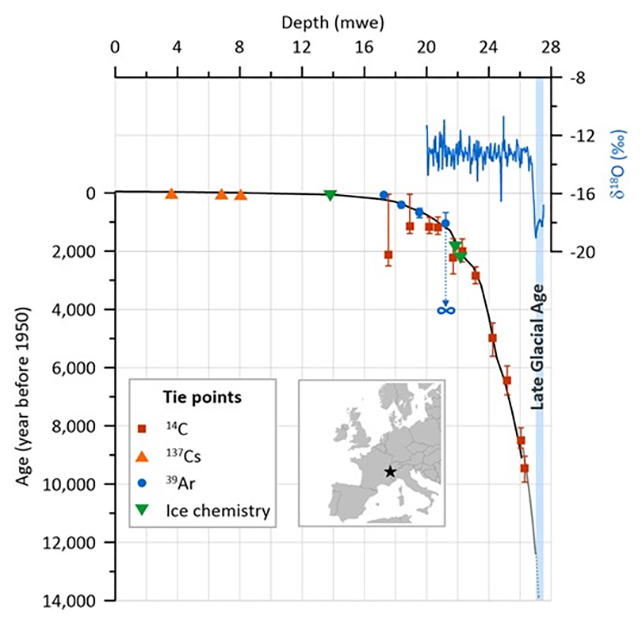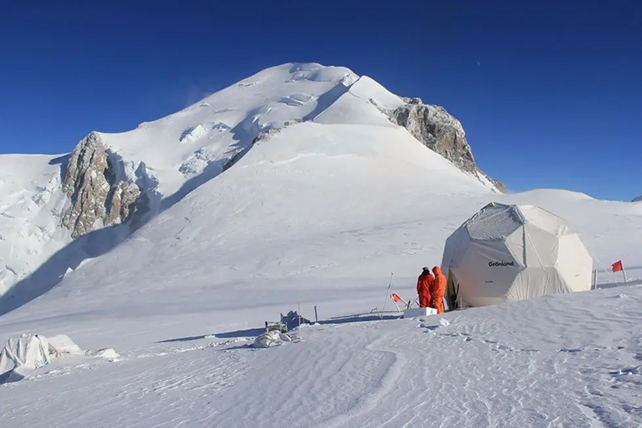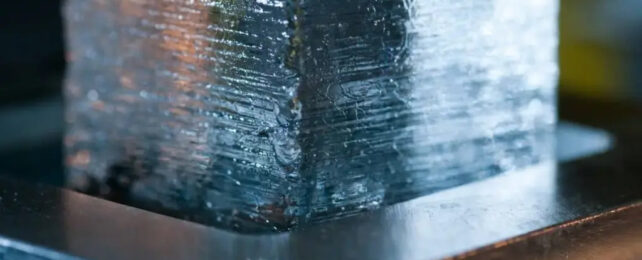An ice core sample from the European Alps has been the first to be dated to the last Ice Age, providing vital historical environmental data stretching back across the last 12,000 years.
The discovery was made by scientists led by a team from the French National Centre for Scientific Research and the Desert Research Institute (DRI) Ice Core Lab in Nevada. They analyzed a 40-meter (131-foot) tube of ice extracted in 1999 from the Dôme du Goûter mountain, which is part of the Mont Blanc range that crosses France and Italy.
"For the first time, we have a fairly complete Alpine record of atmospheric and precipitation chemistry going all the way back to the Mesolithic Period," says DRI Ice Core Lab hydrologist Joe McConnell.
"And that's a big deal, because you have two major climate states – glacial and interglacial – and to get a record of atmospheric precipitation chemistry across that huge climate change tells you the most extreme natural aerosol concentrations that you'd expect."
Related: Oldest Unbroken Record of Earth's Climate Pulled From Antarctic Ice Sheet
The location is particularly important here. Finding ancient ice in Europe dating to a time when the area's human population was growing gives experts much more accurate readings of the local environment through the ages – via particles of dust, sea salt, sulfur, soot, and more – than ice collected from more remote regions like the Arctic.
This particular ice core covers a huge span of history, right back to hunter-gatherers widely spread across the landscape, and through the rise of agriculture and the domestication of animals.

The ice is already giving researchers insights into the past: it seems summers in the Alps were 3.5 °C cooler than they are now during the last Ice Age, and 2 °C cooler more generally across western Europe.
What's more, by charting concentrations of phosphorus (given off by plants), the team could determine vegetation changes over the last 12,000 years. Forests spread more widely in times of warmer climates, and declined in modern times of development and land-clearing.
"It's exciting to find the first ice core from the European Alps containing an intact record of climate that extends back through the current ten-thousand-year warm period and into the very different climate of the last ice age," says geoscientist Susanne Preunkert, from Grenoble Alpes University in France.
After a quarter of a century in storage, the ice core's age has only now been assessed using the latest chemical analysis techniques, such as measuring levels of carbon and argon isotopes.

The researchers are also analyzing sea salt levels to chart changes in wind patterns over time, and to develop better climate models linking sea salt, cloud patterns, and solar radiation.
"If you're really going to go back and examine all possible climate states, past and future, you need a model that captures true climate variability," says McConnell.
"It's a laudable goal, but to evaluate how good the models are, you've got to be able to compare them to observations, right? And that's where the ice cores come in."
The research has been published in PNAS Nexus.
